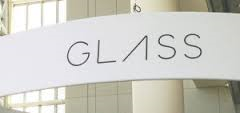Google launches Glass Dev Kit preview and Augmented reality app
Yesterday Google launched the Glass Development Kit (GDK) "Sneak Preview," which will finally allow developers to make real, native apps for Google Glass. While there have previously been extremely limited Glass apps that used the Mirror API, developers now have full access to the hardware.
By releasing the GDK, Google has turned Glass from a neat toy into a platform, one that is ripe for development and open to the public. The bottleneck that is currently holding Glass back is its limited physical distribution, with a likely less than five figure number of headsets distributed.
Still, Google’s pitch to Android developers is simple: Take your Android Application, reuse most of the code, get them on to Glass, and then optimize their interface. In short, by tying Glass to Android, the company is all but ensuring that it will be flush with applications by the time that an average consumer gets near one.
Google Glass runs a heavily skinned version of Android 4.0.4, so Glass development is very similar to Android development. The GDK is downloaded through the Android SDK Manager, and Glass is just another target device in the Eclipse plugin. Developers have access to the Glass voice recognition within their app as an intent. Apps can be totally offline and can do all their processing on Glass. They can also support background events and have full access to the camera and other hardware.
Google showed off a few of the first native Glass apps, and one of the coolest among them was Wordlens, a real-time, augmented-reality translation app. Wordlens works much like it does on the iPhone—foreign-language text targeted by the camera is translated on top of the video feed in real time. This is neat on a smartphone, but on a device like Glass it becomes much more powerful. Just by looking at text and saying "OK, Glass, translate this," the text on the Glass video feed is translated and placed above the original text. Wordlens' app uses the accelerometers to keep the virtual text aligned, all while working completely offline
Some of the other applications are,
- Allthecooks: A cooking app to help you read recipes without using your hands.
- Spellista: A word jumble game.
- GolfSight: A tool to calculate distances and the like as you wear silly pants and wave sticks at small round objects.
- Strava: A run tracking app.
I haven't used these glasses myself yet, so I was worried about the terrible frame rate displayed by Glass but I heard the screen mirroring functionality is extremely slow, but on real hardware, Glass runs the stock apps pretty smoothly. It remains to be seen how much power native apps can actually get out of the system, as Glass only has a 1GHz dual-core OMAP 4430 and 1GB of RAM. Native apps pushing the hardware to the limit or running in the background will make the runtime even worse. And battery life is a problem, too. Even with the extremely conservative stock apps, Glass can only last a few hours.




Comments